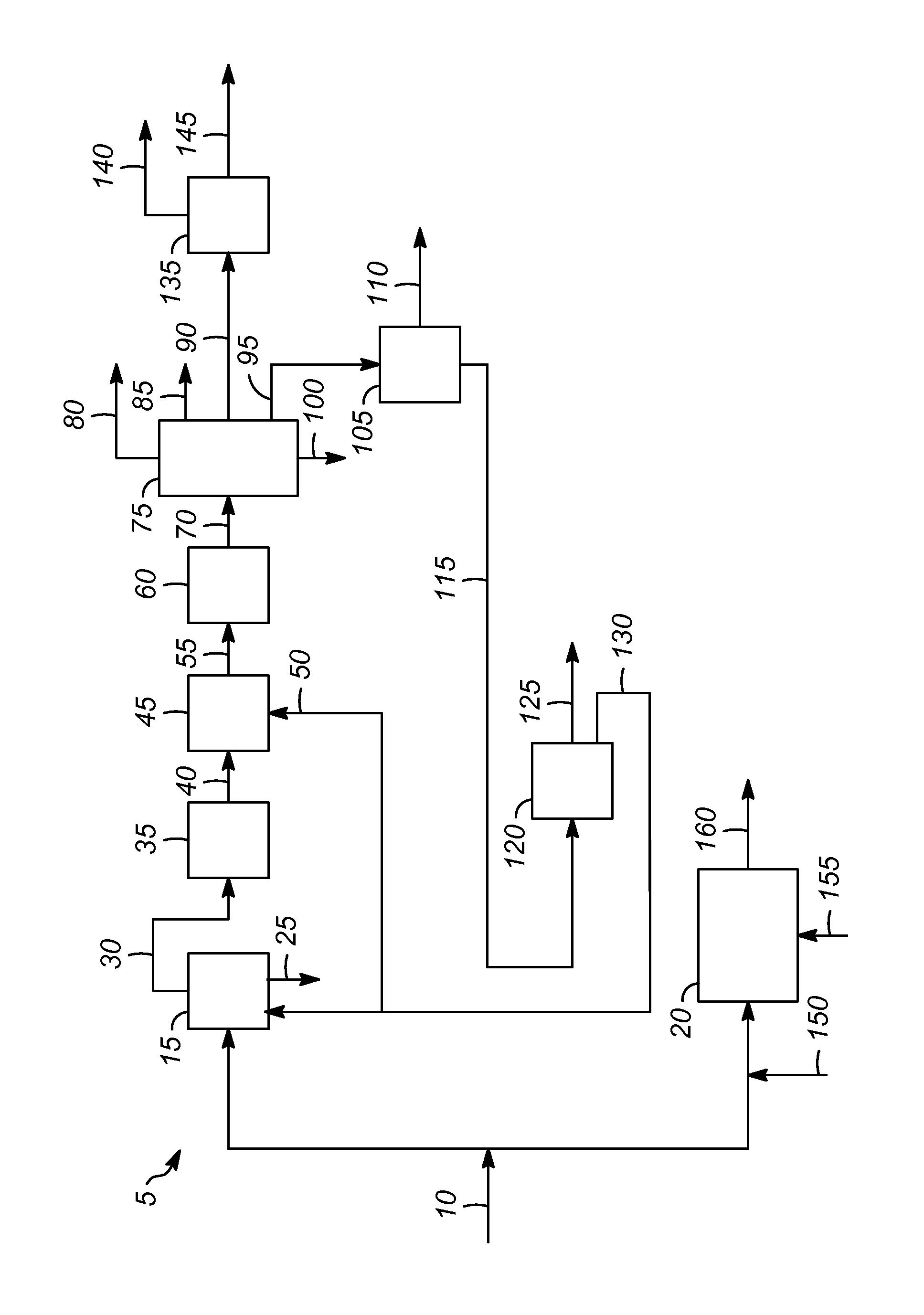Process for converting polycyclic aromatic compounds to monocyclic aromatic compounds
a technology of monocyclic aromatic compounds and polycyclic aromatic compounds, which is applied in the direction of hydrocarbon preparation catalysts, hydrocarbon oil treatment products, organic chemistry, etc., can solve the problem of increasing the cost of petrol
- Summary
- Abstract
- Description
- Claims
- Application Information
AI Technical Summary
Benefits of technology
Problems solved by technology
Method used
Image
Examples
Embodiment Construction
[0011]The FIGURE shows one embodiment of a coal conversion process 5 of the present invention. A coal feed 10 can be sent to a pyrolysis zone 15, such as a coking oven, or a gasification zone 20. Alternatively, the coal feed 10 can be split into two parts and sent to both the pyrolysis zone 15 and the gasification zone 20.
[0012]In the pyrolysis zone 15, the coal is heated at high temperature, e.g., up to about 2,000° C. (3,600° F.), in the absence of oxygen to drive off the volatile components. Coking produces coke 25 and coal tar stream 30. The coke 25 can be used in other processes, such as the manufacture of steel.
[0013]The coal tar stream 30 which comprises the volatile components from the coking process can be sent to an optional contamination removal zone 35, if desired.
[0014]The contaminant removal zone 35 for removing one or more contaminants from the coal tar stream 30 or another process stream may be located at various positions along the process depending on the impact of...
PUM
| Property | Measurement | Unit |
|---|---|---|
| boiling point | aaaaa | aaaaa |
| temperature | aaaaa | aaaaa |
| pressure | aaaaa | aaaaa |
Abstract
Description
Claims
Application Information
 Login to View More
Login to View More - R&D
- Intellectual Property
- Life Sciences
- Materials
- Tech Scout
- Unparalleled Data Quality
- Higher Quality Content
- 60% Fewer Hallucinations
Browse by: Latest US Patents, China's latest patents, Technical Efficacy Thesaurus, Application Domain, Technology Topic, Popular Technical Reports.
© 2025 PatSnap. All rights reserved.Legal|Privacy policy|Modern Slavery Act Transparency Statement|Sitemap|About US| Contact US: help@patsnap.com


